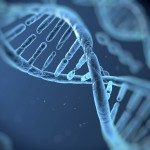Link to Pubmed [PMID] – 25122888
Link to HAL – hal-04165021
Link to DOI – 10.1523/JNEUROSCI.0947-14.2014
Journal of Neuroscience, 2014, 34 (33), pp.10853-10869. ⟨10.1523/JNEUROSCI.0947-14.2014⟩
The hair cell ribbon synapses of the mammalian auditory and vestibular systems differ greatly in their anatomical organization and firing properties. Notably, vestibular Type I hair cells (VHC-I) are surrounded by a single calyx-type afferent terminal that receives input from several ribbons, whereas cochlear inner hair cells (IHCs) are contacted by several individual afferent boutons, each facing a single ribbon. The specificity of the presynaptic molecular mechanisms regulating transmitter release at these different sensory ribbon synapses is not well understood. Here, we found that exocytosis during voltage activation of Ca2+ channels displayed higher Ca2+ sensitivity, 10 mV more negative half-maximum activation, and a smaller dynamic range in VHC-I than in IHCs. VHC-I had a larger number of Ca2+ channels per ribbon (158 vs 110 in IHCs), but their Ca2+ current density was twofold smaller because of a smaller open probability and unitary conductance. Using confocal and stimulated emission depletion immunofluorescence microscopy, we showed that VHC-I had fewer synaptic ribbons (7 vs 17 in IHCs) to which Cav1.3 channels are more tightly organized than in IHCs. Gradual intracellular Ca2+ uncaging experiments revealed that exocytosis had a similar intrinsic Ca2+ sensitivity in both VHC-I and IHCs (KD of 3.3 ± 0.6 μm and 4.0 ± 0.7 μm, respectively). In otoferlin-deficient mice, exocytosis was largely reduced in VHC-I and IHCs. We conclude that VHC-I and IHCs use a similar micromolar-sensitive otoferlin Ca2+ sensor and that their sensory encoding specificity is essentially determined by a different functional organization of Ca2+ channels at their synaptic ribbons.


